As a savvy investor, this should be a question you are asking yourself on a regular basis. Checking in on your rental property and its current market value is an important step in the property investment game. So, how do I do that you ask? What steps do you need to take to asses the value of your property in today’s market?
In short…
What is my rental property worth?
There are several key indicators you can look at to assess the rental value of your property.
Similar Properties
Start by looking at similar properties that are sitting on the rental market. Are the rents they are offering in line with your property. Are they higher? Lower? On par? Look at the area, number of bedrooms/bathrooms and condition of property to make a suitable comparison. This should give you an indication of whether you are sitting in the correct rental ballpark.
Vacancy Rates
How long are empty properties sitting on the market? Is it days/weeks/months? Is supply outstripping demand? In a slower market, properties will sit on the market for longer, with less urgency from prospective tenants. A healthy vacancy rate is considered to be between 2-3%. Check your suburb with this handy Vacancy Rate tool by SQM Research.
Rental Yields
Rental yield measures how much cash your property produces each year as a component of its value. So for your rental property, this equates to the rental income generated per year when compared to its value.
There are two types of rental yield: gross and net.
Gross Yield
The most commonly referred to and easiest to calculate, yet also the most overrated source of industry data. It determines the rental income alone as a component of the value. Be aware this is not an accurate provider of rental yield as it doe not take additional investment expenses into account – it purely looks at rental income compared to value alone.
Rent: $400 per week
Value: $475 000
Gross Yield = $400 x 52 wks ÷ 475 000 x 100 = 4.38%.
Net Yield
Harder to calculate but more important as it takes all other expenses related to the property into account including rent, vacancy rates, insurance, repairs, management fees etc. The net yield takes off these additional yearly expenses from the yearly rent, then divides by the value. Note net yield does not take mortgage interest and tax into account as these figures are not directly related to the property itself.
For example:
Rent: $400 x 52 = $20 800
Yearly Expenses (total of insurance + fees + repairs + water + rates) = $3000
Net Income = $17 800
Net Yield = 3.73%
Smart Property Investment offer a handy postcode search tool to compare gross yields of suburbs across Australia.
Above all, your Property Manager should help to guide you through this process and offer recommendations to you. They are living and breathing the property market in your area on a daily basis, are are best suited to offer advice, If you are fining your Property Manager isn’t giving you the advice you need, get in touch with us for an in-depth market appraisal.



